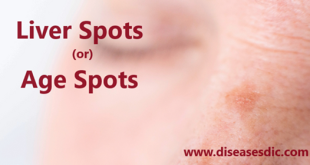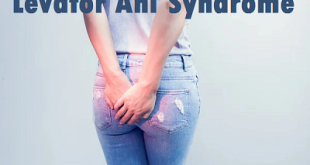What is Lymphangitis?
Lymphangitis is an infection or inflammation of the lymphatic system. The lymphatic system is a crucial part of the immune system. It is designed to collect fluids from cells and tissues in the body and help them re-enter the bloodstream.
The organs within the lymphatic system, such as the bone marrow, spleen, thymus, lymph nodes, tonsils, and lymphatic vessels, help to create and store lymphocytes, which are white blood cells that play a role in immunity. The system also aids in sending the white blood cells where they need to go in the body to fight off infection.
When an infection infiltrates the lymphatic system, lymphangitis develops and can cause a host of different symptoms.
Pathophysiology of Lymphangitis
The major function of the lymphatic system is to resorb fluid and protein from tissues and extravascular spaces. The absence of a basement membrane beneath lymphatic endothelial cells affords the lymphatic channels a unique permeability, allowing resorption of proteins that are too large to be resorbed by venules.
Lymphatic channels are situated in the deep dermis and subdermal tissues parallel to the veins and have a series of valves to ensure one-way flow. Lymph drains via afferent lymphatics to regional lymph nodes and then by efferent lymphatics to the cisterna chyli and the thoracic duct into the subclavian vein and venous circulation.
Lymphangitis most commonly develops after cutaneous inoculation of microorganisms that invade the lymphatic vessels and spread toward the regional lymph nodes. Organisms may invade lymphatic vessels directly through a skin wound or an abrasion or as a complication of a distal infection.
Causes of Lymphangitis
Lymphangitis is a type of secondary infection, which means it happens because of another infection.
When the infection travels from the original site to the lymph vessels, the vessels become inflamed and infected.
Bacterial infections are the most common cause of lymphangitis. Lymphangitis due to a viral or fungal infection is also possible.
Any injury that allows a virus, bacteria, or fungus to enter the body can cause an infection that leads to lymphangitis. Some possible culprits include:
- puncture wounds, such as from stepping on a nail or other sharp object
- untreated or severe skin infections, such as cellulitis
- insect bites and stings
- a wound that requires stitches
- infected surgical wounds
- sporotrichosis, a fungal skin infection common among gardeners
Risk Factors
Lymphangitis being a manifestation of wide concurrently occurring spectrum of manifestations or pathologies. The risk factors vary from etiology to etiology.
Common risk factors for infectious causes of lymphangits include:
- Any trauma to the skin
- Chronic skin disorders such as psoriasis or eczema
- Diabetes mellitus
- Human, animal, or insect bites
- Immunocompromised hosts
- Lymphedema
- Skin and soft-tissue infections
- Surgery
- Treatment of breast cancer
- Venous catheterization
- Travel to filaria endemic area
Risk factors for sclerosing lymphangitis include:
- Vigorous sexual acitvity
Symptoms of Lymphangitis
One of the outstanding symptoms of lymphangitis is red streaks. You will notice reddish stripes extending from the injury site to areas where you have a lot of lymph glands, especially the groin and armpits. They may be common if you have an existing skin infection. Look out for other symptoms of lymphangitis like:
- Feeling sick or weak
- A wound that’s taking a long time to heal
- Fever
- Chills
- Headache
- Loss of appetite
- Feelings of fatigue
- Swelling near the armpits or groin
If you feel ill following an injury or have a high fever and other symptoms of lymphangitis, you need to see a doctor.
What are the complications of lymphangitis?
Lymphangitis can spread quickly, leading to complications such as:
- Cellulitis, a skin infection
- Bacteremia, or bacteria in your blood
- Sepsis, a body-wide infection that’s life-threatening
- Abscess, a painful collection of pus that’s usually accompanied by swelling and inflammation
If bacteria enter your bloodstream, the condition can be life-threatening. Visit your healthcare provider immediately if you experience any of the following:
- Increasing pain or redness at the site of the infection
- Growing red streaks
- Pus or fluid coming from the lymph node
- Fever over 101°F (38.3°C) for more than two days
Take antibiotics as prescribed to help prevent complications. Don’t miss a dose, especially in the first few days of treatment.
How Is It Diagnosed?
At first glance, lymphangitis may be confused with thrombophlebitis which is the inflammation of veins along with the formation of blood clots within them as a result. But upon closer examination, it will be noted that the patient displays characteristic red streaks underneath the skin along with enlarged or swollen lymph nodes. This makes it fairly easy to diagnose lymphangitis. Further procedures can help to illuminate the source of the problem. Your doctor may perform the following tests in order to arrive at a diagnosis:
- Physical examination.
- Medical history.
- Blood culture tests.
- Lymphangiography.
- Tissue biopsy. This is not always necessary.
Treatment for Lymphangitis
Treatment should begin immediately to keep the condition from spreading. The doctor may recommend the following:
antibiotics, if the cause is bacterial — in the form of oral medication or intravenous antimicrobial therapy, which involves antibiotics given directly into our veins
- Pain medication
- Anti-inflammatory medication
- Surgery to drain any abscesses that may have formed
- Surgical debridement, or removal, of a node if it’s causing obstruction
The infected area should be kept at an elevated position to reduce swelling and slow down the infection from spreading. At home, take hot compresses to ease down the pain. Repeat this technique multiple times every day for at least twenty to thirty minutes. The patient can also wet a soft piece of cloth in warm water and keep it in the areas of inflammation. Hot showers can also be taken. It will aid in healing and increase the blood flow. But make sure that the cloth has not soaked water that is too hot as that may lead to further complications.
If possible, keep the infected area elevated. This helps reduce swelling and slows the spread of infection.
Prevention
Lymphangitis is usually caused by spread from a skin infection. If you have a skin infection, follow your doctor’s treatment plan.
To reduce your risk of getting a skin infection:
- Keep your skin clean.
- Keep your fingernails clipped short and clean.
- Apply lotion to dry skin.
- Take steps to avoid injury to the skin:
- Wear protective gear in sports.
- Wear long-sleeved shirts when hiking.
- Wear sandals when at the beach, rather than going barefoot.
- Be careful around animals. Treat pets with respect to avoid bites.
- Do not swim in natural waters if you have cuts or sores.
- If a small cut, bite, or other injury occurs:
- Clean cuts or scrapes with soap and water.
- Apply antibiotic ointment.
- Cover with a bandage or dressing.
- Do not scratch wounds.
- Call your doctor right away if the area becomes red or swollen.
- Seek prompt medical care for larger wounds or bites.
- If your legs tend to swell, elevate them several times a day.
 Diseases Treatments Dictionary This is complete solution to read all diseases treatments Which covers Prevention, Causes, Symptoms, Medical Terms, Drugs, Prescription, Natural Remedies with cures and Treatments. Most of the common diseases were listed in names, split with categories.
Diseases Treatments Dictionary This is complete solution to read all diseases treatments Which covers Prevention, Causes, Symptoms, Medical Terms, Drugs, Prescription, Natural Remedies with cures and Treatments. Most of the common diseases were listed in names, split with categories.







